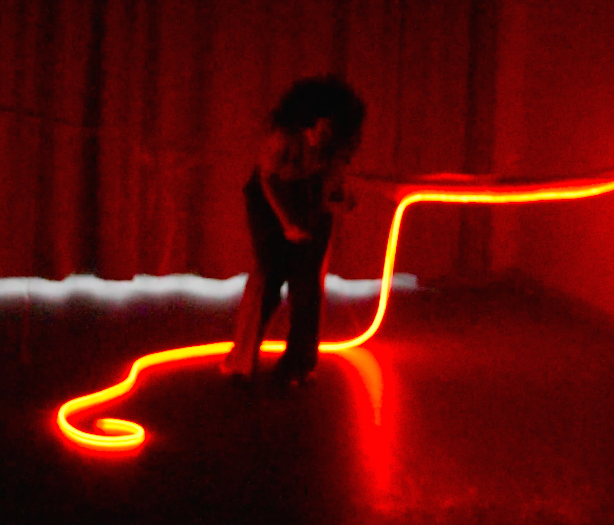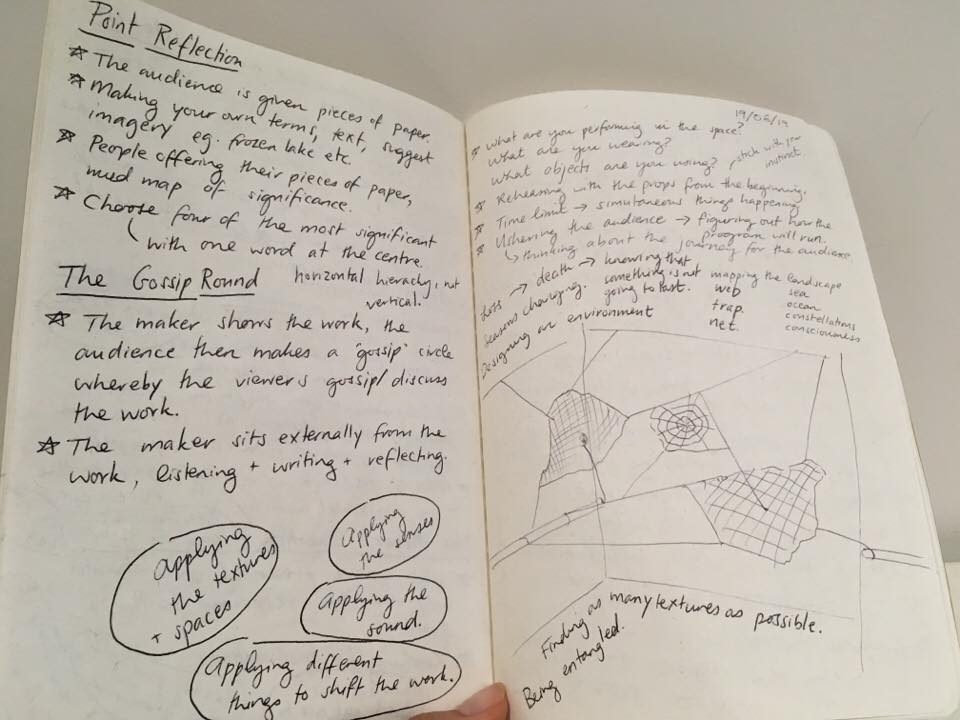Tasks
What does existence mean to you? To be human? Questions/brainstorming
Brainstorming these moments of existence
What do you recall? What speaks to us?
How are we going to relate to ourselves and to other people in the future?
GIF dances - 5-10 repetitions, celebratory things, universal looping movements
Clay moulding - pushing the body through clay, resistance
Switchboard - playing on the switchboard, switch board master - switchboard in the air, switchboard on partner
Elastic body - tension, release, revolving around 360 degrees
Humming into singing into crying, throwing sounds into the space
2.
Going through the elements - water —> wood —> wind —> earth
Going through them somatically, really articulating what they are and then finding a way of accessing them rhythmically
Snapping in and out of these states
3.
What do you do to a face that you care about? What gestures? How would you react?
Do this with another person
Imagine this and do this task by yourself and then with a stranger
Speaking and then become quieter and quieter, as if you were having a conversation and suddenly it’s just mouthing words
How could this task become participatory?
4.
Singing/humming/hymn
Throw a sound into the space upon entering it
A word
A hymn
A laugh
A hum
5.
魂 = soul, mind, spirit
Using the soul symbol as a point of reference to create a choreographed phrase
Thinking about personal history, using the lines and points of the calligraphy to influence your movement pattern
What does this tonal wash do to your experience of the space? How are you changing, affecting, contributing to the space upon entering?
The difference between being in the physical ritual and embodiment of practice or the performance of it
We are not performing the work
The concept of ‘The Everywhere’ - a metaphor for Dreaming time
Sound being continuous, eliciting the dreaming which is ever present
The relationship between ritual and performance.
Through the act of ritualistic performance, we confront a transformation
A transformation of ourselves
Of what we see
How do we negotiate the space between ritual and performance?
When does the public become the work?



















